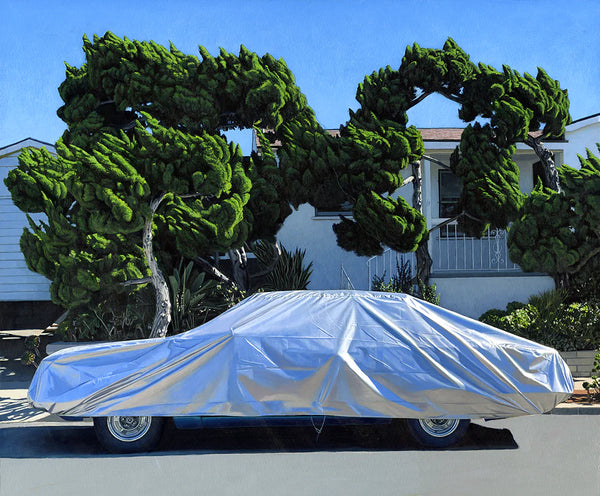This store requires javascript to be enabled for some features to work correctly.

John Margolies
Margolies was drawn to mid-century roadside architecture from a young age. On family car trips, these commercial structures designed to seduce weary travelers called to him even as his parents repeatedly refused to stop. Margolies took this boyhood unrequited love and turned it into a 30+ year photography career that took him all across America.
In his travels, Margolies took more than 11,000 photographs of vernacular buildings across America’s criss-crossing network of highways, main streets, and back roads. Though many of his images involved the architecture that defined car travel—motels, diners, gas stations, and the like—he also photographed the purely American quirk that lined the roads: buildings shaped like dinosaurs, a giant pair of dice on the mini-golf course, a gator-mouth entrance to a Florida theme park.
This eccentric style came about as suburban living boomed post-World War II, necessitating the creation of more paved roads, and more ways to bring travelers into roadside businesses. New building materials and techniques had emerged, allowing for playfully eccentric free-form structures to pop up. Signs, artifacts, and buildings ranged from whimsical to psychedelic, their main purpose an elaborate enticement. As the style spread, critics derided it as “tacky”, “florid”, and “ugly”. Margolies strongly disagreed: in his mind, these ephemeral pieces better expressed the story of 20th century America than canonical works that didn’t reflect the everyday experience of the people who used them.
It was this mindset that inspired Margolies to drive over 100,000 miles capturing a unique slice of American architecture and history, even as it faded. Much of what he photographed is now gone. A few times, he found out that he’d photographed a building mere days before it was demolished.
His treasure trove of images has been turned into quite a few books, most notably Roadside America, featuring a curated set of around 400 photographs. It was published in 2010, six years before Margolies passed away of pneumonia at 76.
In his travels, Margolies took more than 11,000 photographs of vernacular buildings across America’s criss-crossing network of highways, main streets, and back roads. Though many of his images involved the architecture that defined car travel—motels, diners, gas stations, and the like—he also photographed the purely American quirk that lined the roads: buildings shaped like dinosaurs, a giant pair of dice on the mini-golf course, a gator-mouth entrance to a Florida theme park.
This eccentric style came about as suburban living boomed post-World War II, necessitating the creation of more paved roads, and more ways to bring travelers into roadside businesses. New building materials and techniques had emerged, allowing for playfully eccentric free-form structures to pop up. Signs, artifacts, and buildings ranged from whimsical to psychedelic, their main purpose an elaborate enticement. As the style spread, critics derided it as “tacky”, “florid”, and “ugly”. Margolies strongly disagreed: in his mind, these ephemeral pieces better expressed the story of 20th century America than canonical works that didn’t reflect the everyday experience of the people who used them.
It was this mindset that inspired Margolies to drive over 100,000 miles capturing a unique slice of American architecture and history, even as it faded. Much of what he photographed is now gone. A few times, he found out that he’d photographed a building mere days before it was demolished.
His treasure trove of images has been turned into quite a few books, most notably Roadside America, featuring a curated set of around 400 photographs. It was published in 2010, six years before Margolies passed away of pneumonia at 76.
Join our mailing list for 15% off
Sign up for our newsletter to get first access to new editions, catch the freshest commentary + features, and snag a special discount.






